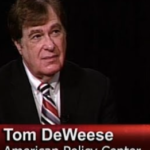Is beef exporting necessary?
By Darol Dickinson–3-2-09
The National Cattleman’s Beef Association says, “..we’re working hard to open trade with Japan, which could add $50 per head to your bottom line.” Multiply that by 97 million cattle in the USA, that is impressive, if true! Ken Stielow, Chairman of the Cattleman’s Beef Board—Beef Checkoff, says, “Exports are key to the future of the US beef industry.”
To build increased beef income for US exporters, US Hall of Famer Nolan Ryan recently was part of the celebration of US Meat Month in Japan. NCBA Past President Andy Groseta accompanied Condoleezza Rice to South Korea to promote US beef and assisted to open trade relations.
False Consumer Demands
It was published by USDA (Jan.11, 2006) that Japan was refusing to resume beef purchases from the US until the NAIS system was 100% operational. Japan did later resume trade with US beef processing plants on July 27, 2006. South Korea also resumed beef trade without any NAIS mandatory requirement. During the same period Australia lost 17% of their Korean beef market while having a fully operational animal ID system called NLIS. The two largest purchasing countries of US beef are Mexico and Canada and they do not require NAIS. It now appears certain that NAIS is not, and has never been a factor in US beef export requirements.
Billions have been spent on US beef export promotion. Seldom, if ever, has anyone considered the cost of return for this “investment.”
Evaluation Inadequate
The world famous professor and animal scientist Jan Bonsma of Pretoria, South Africa said, “The USA has the greatest data collection of any country, but some of the absolute worst statistical evaluation abilities.” World beef export, live cattle, import, pounds, metric tons, dollars and to the penny values are public knowledge. The NASS – National Agricultural Statistics Service at www.nass.usda.gov, is a tell-all. For imports and exports go to the FAS – Foreign Ag Service at www.fas.usda.gov/ustrade/USTExHS6.asp?QI=.
All Data Is Available
NASS statistics are for all live and processed beef and show that in the year 2007, the Value in Dollars of US export sales were $2,183,977,168. This volume of exports was shown to have increased by a few million dollars each year for the past 4 years. The Value in Dollars for US imports during 2007 were $4,857,454,008 for all beef. The volume of imports increased by a few million dollars each year during the past 5 years.
The average US resident consumes 68 lbs of beef annually, less than 3 oz. per day. This amount has also increased slightly each year. This is the amount of beef the US consumer wants, enjoys and expects.
The export/import is explained in a number of ways. Some say the US exports low quality beef like tripe, grind, liver, etc., and imports high quality product. Others say the Japanese buy the highest quality steaks for the world’s highest prices. One can search the NASS data and try to figure that out. In reality, the USA is the world’s largest beef consumer and pays the most for it.
Buying High, Selling Low
The Egyptian market for US beef liver has been highly touted. The total value of liver exported to all countries in 2007 was $88,445,888. Beef liver, which is “pure” beef, is a major ingredient in pet food. The domestic US pet food market is so huge it makes Egyptian beef liver purchases look like a wheel barrow load in comparison.
To understand why US beef marketers swear by the crucial importance of exporting beef, one must assume there is a major accumulation of profit between the process of importing and exporting. This profit, obviously, would be large enough that NAIS is imperative and the over $138,000,000 invested to enroll US farm premises was justified by Congress, the President and the USDA. Unfortunately over 3,200,000 livestock and equine producers in the USA are still trying to understand why anyone ever dreamed up NAIS. It doesn’t and hasn’t ever penciled . . . Period!
Flawed Reasoning-At What Cost?
During the American Association of Bovine Practitioners meeting USDA’s Bruce Knight stated that, “We want NAIS in the United States so the US will be in compliance with OIE (World *Organisation of Animal Health) export regulations by 2010.”
The NASS data shows that the average per pound price in US dollars paid for imported beef, live and processed, is $2.39. The average price received for each exported pound of beef, live and processed, is $1.60. Each exchange of a pound of beef produces a net 79 cent loss.
As beef cow numbers annually decrease in the USA the need will increase for more imported beef. During 2009, for every $1 increase in beef exports, the US consumer will require $3 worth of beef to be imported from a country with lower quality beef, less herd health and lower inspection standards than USA. This factor will increase in 2010 and even more in 2011.
Large meat processing companies may find a profitable niche market in some distant country, and as capitalists, all should wish them well. However, when the beef lovers of the USA are forced to enjoy a much smaller portion each year, it may be very unprofitable to globally export prime steaks away from the US consumer.
Future Beef Export Grim
In 2012 to 2015 data shows there will be very little meat of any kind produced in the USA totally using grains that could be used for ethanol or human consumption. There will be far less US exporting of beef. Any association, government or business pouring money into export beef market development obviously does not value or consider NASS data. Anyone applying NAIS enforcement tags to comply with the OIE’s world export recommendations, who expect any premium for NAIS identified cattle——-will be grossly disappointed.
US beef is so appreciated for taste, nutrition and safety, it is being oversold world wide. More product is exported and consumed than is produced in the USA. As US efforts to export beef increase, there will be a greater need for imported beef to supply the US consumer. If US exports increase a billion pounds, a billion more pounds will be imported to fill the need.
Many changes will come about in the next few years. The cost of grains and beef will increase, but the bloating costs of export marketing of both should intelligently be reduced from a multimillion dollar guzzle to a small drip. Without a doubt NAIS is not required by export consumers or USA consumers, but only by USDA and the World Organisation of Animal Health.
*Organisation—French spelling.
* * * * *
Darol Dickinson, is manager of one of the 50 largest seed stock purebred cattle operations in the USA. He is involved in livestock marketing, retail meat sales, cattle feeding, and exporting. The Dickinson Cattle Co. Inc., ranch site is www.texaslonghorn.com and the site opposing NAIS is www.naisSTINKS.com. pH 740 758 5050




